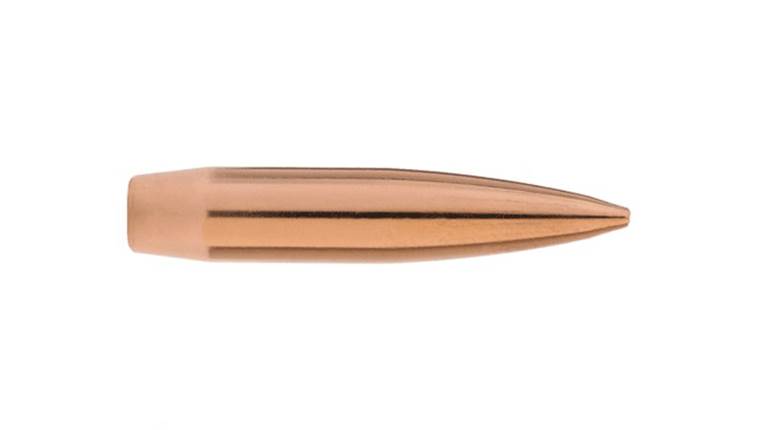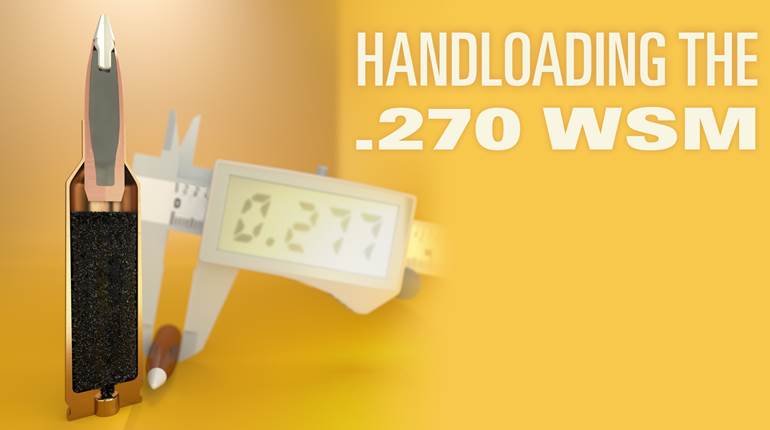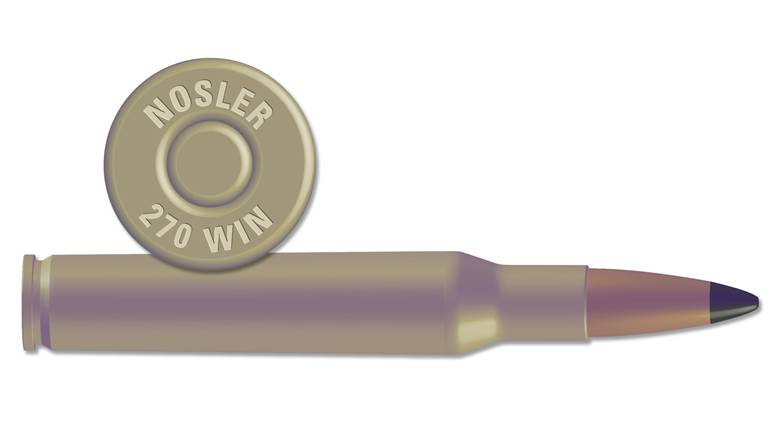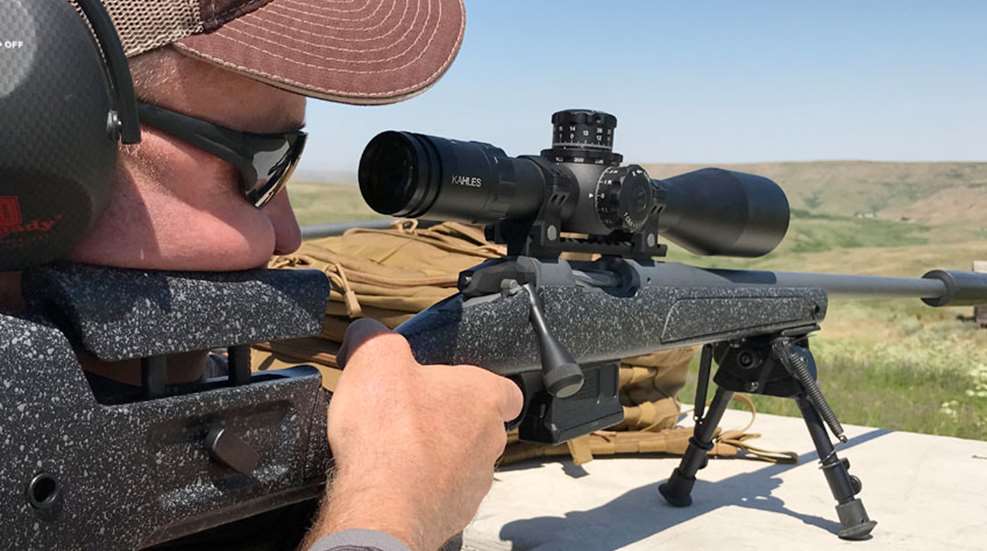
Bergara's Premier HMR Pro rifles cost upwards of two grand, and it delivers commensurate accuracy.
Unless you have been touring the outer reaches of the solar system, you have heard that the 6.5 mm Creedmoor is the best thing to arrive in the shooting world since the advent of self-contained cartridges. Some crowing about the 6.5 has become a tad pretentious, however; after all, the Creedmoor burns propellant to fire bullets, just like all other cartridges. What the 6.5 has in its favor, though, is a wide variety of bullet weights and styles. Pair those bullets with the correct propellant, and the 6.5 has the versatility for both target shooting and hunting—from small game to deer, antelope and even larger game.
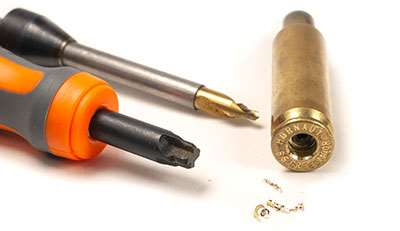
Small Game And Practice
Through the years, lots of young hunters borrowed my old 6.5x55 mm Swedish rifle to hunt deer and elk. The only requirement to borrowing the rifle was to practice with it by shooting several boxes of light-recoiling cartridges I had handloaded before the season started. The beginning hunters always finished their summer homework, ventilating targets and ground squirrels.
The same technique extends to shooting the Creedmoor. Most hunting rifles wear a 3-9X, or similar magnification, scope. So there is no need to fire bullets at maximum velocity if you can’t see the tiny target of a ground squirrel much past 250 yds. Light bullets fired by a reduced amount of propellant go a long way in shielding a skinny shoulder padded by only a T-shirt.
When choosing a propellant to soften recoil, I favor relatively fast-burning ones because charges weigh a few grains less than slower-burning powders. A middle weight of IMR 8208 XBR worked well with Sierra 85-gr. Varminter bullets in the Creedmoor. The load barely bounced the reticle off the target shot through a nearly 13-lb. Bergara Premier HMR Pro rifle, wearing a big Kahles scope. The load also produced only a mild kick when shot through my Ruger American Predator rifle that weighs 8 lbs.
The 40 grs. of 8208 left some air space in cases with the base of the Sierra bullets seated half-way down the neck of 6.5 cases. The extreme spread of velocity, though, averaged only
36 f.p.s. for 15 shots. A benefit of the load is that the Sierra bullets hit the same place on targets at 100 yds. as 120-gr. bullets fired at 3000 f.p.s. and only an inch lower than 142-gr. bullets fired at 2700 f.p.s.
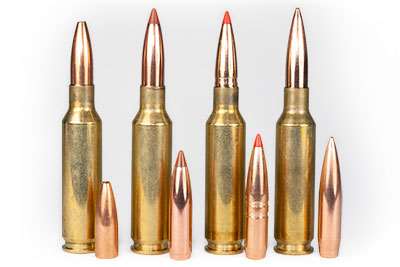
Big Game
The vast majority of hunters go after deer. The 6.5 fires 120-gr. and heavier bullets at relatively mild velocities, so expensive bonded-core or single-metal bullets are unnecessary to maintain bullet integrity for the shallow penetration required for deer.
The 6.5 stands tall against other cartridges for hunting deer. The .25-’06 Rem. was thought of as "the" long-range deer cartridge in years gone by. The 6.5 shooting Nosler 120-gr. Ballistic Tips at 3000 f.p.s. is but a touch light in energy at 600 yds. compared to the .25-’06 firing 115-gr. Ballistic Tips at a muzzle velocity of 3150 f.p.s. The .25-’06’s advantage, though, comes from consuming an additional 13 grs. of powder compared to the 6.5.
The 6.5 is compliant with a variety of bullets if regulations in your hunting area require shooting lead-free bullets. Copper Barnes Tipped Triple-Shock and Cutting Edge Raptors and gilding metal Hornady GMX are long for their weight. After their noses expand, their solid shanks continue to penetrate. That gives them a leg up, compared to ordinary bullets, when hunting big black bears and elk.
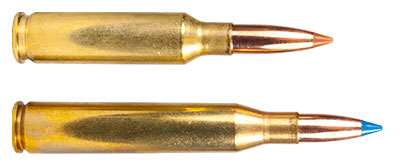
Many 6.5 mm Creedmoor hunters straightaway choose 140-gr. bullets. After all, the 6.5 was designed around that weight bullet. Over the years the young hunters who borrowed my 6.5 Swede rifle were unwittingly my bullet testers. They shot my handloads with 140-gr. bullets from plain Speer Hot-Cors and Hornady InterLocks to Nosler Partitions. The bullets usually passed clear through the deer, elk and antelope they shot, and the new hunters never noticed any difference in performance. The distances they shot were fairly normal, from 50 to a few excited steps past 200 yds.
Targets
The growing popularity of long-range target shooting has riflemen obsessed with bullets with a high ballistic coefficient (BC). The 6.5 delivers with bullets such as Hornady 140-gr. ELD Match bullets with a G1 BC of 0.646 and a 0.626 BC for Sierra 142-gr. MatchKings. Much heavier 200-gr. .30-cal. bullets are required to match the BCs of these 6.5 bullets.
Handloaders spend lots of time at the bench making sure their long-range cartridges consistently produce a narrow extreme spread of velocity. An extreme spread of only 50 f.p.s. results in 8" of vertical spread at 800 yds. with the 6.5 shooting Hornady 140-gr. ELD Match at an average of 2700 f.p.s.
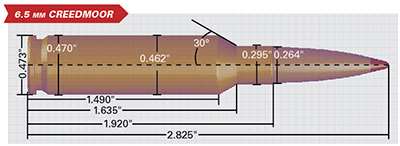
Case selection and preparation go a long way to reduce extreme spread of velocity. In preparing cases to load Sierra 142-gr. MatchKing bullets, I sized and trimmed to length a batch of once-fired Hornady 6.5 cases. Cases varied in weight from 150.7 to 153.4 grs. I set aside 25 that weighed between 151.8 and 152.1 grs. I filled a few of those cases with water and weighed them. They tipped the scale at the same weight, verifying they contained the same internal volume.
Neck tension is important for an even release of bullets, and resulting velocity. The necks of selected cases were uniform in thickness. After one firing, the case necks were still uniform in hardness. After the cases have been fired several times the necks will require annealing to restore consistent hardness. The selected cases also had their primer pockets cut to an identical depth, and the interior of their flash holes reamed to remove burrs, which can help produce a constant flame to ignite powder. The cutters removed only a few scrapes of brass.
All that preparation resulted in an extreme velocity spread of 26 f.p.s. firing 15 Sierra 142-gr. MatchKing bullets. That velocity spread would result in about 4" of vertical bullet span at 800 yds.
In the end, the 6.5 mm Creedmoor fires bullets at speeds not sensationally fast. Handload the cartridge with the correct bullets and propellants, though, and it will perform effectively for about all shooting this side of the moon that you passed on your space vacation.
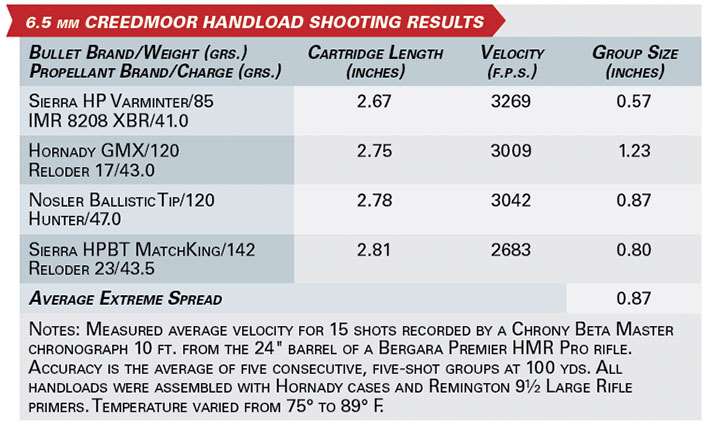
WARNING: Technical data and information contained herein are intended to provide information based upon the limited experience of individuals under specific conditions and circumstances. They do not detail the comprehensive training, procedures, techniques and safety precautions that are absolutely necessary to properly carry on similar activity. READ THE NOTICE AND DISCLAIMER ON THIS WEBSITE. ALWAYS CONSULT COMPREHENSIVE REFERENCE MANUALS AND BULLETINS OF PROPER TRAINING REQUIREMENTS, PROCEDURES, TECHNIQUES AND SAFETY PRECAUTIONS BEFORE ATTEMPTING ANY SIMILAR ACTIVITIES.












